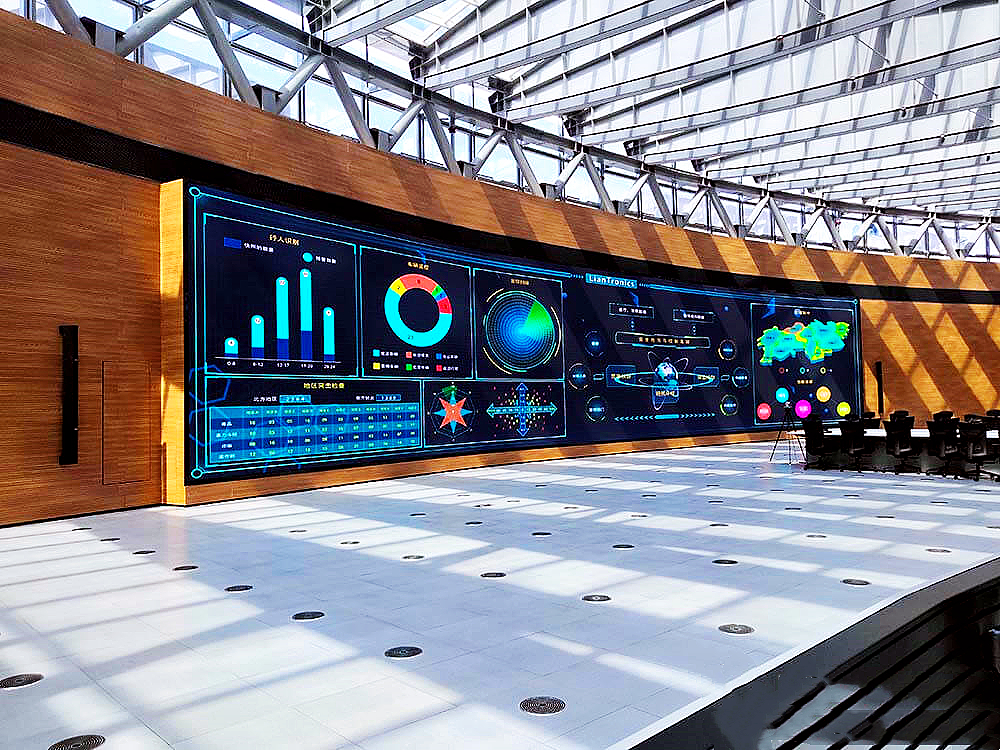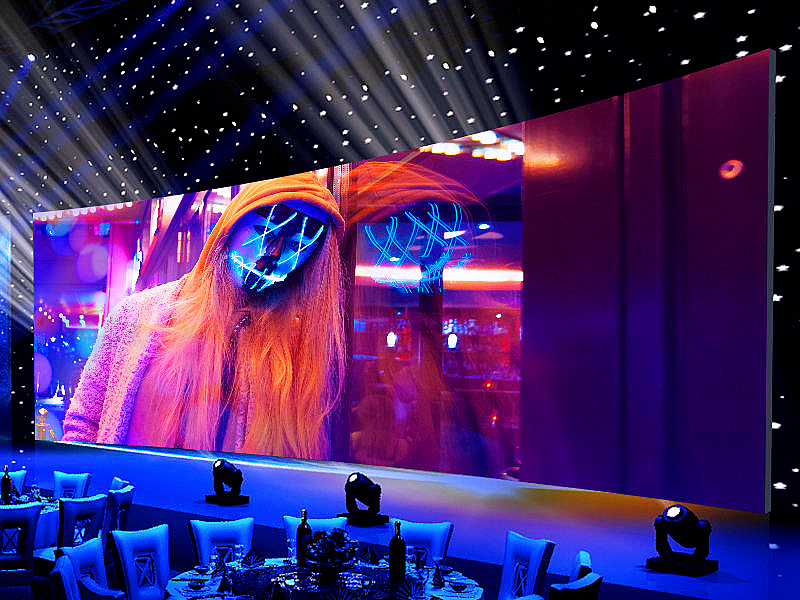How to Know the Differences Between LED Display Screens and LCD Monitors


Features,advantages and disadvantages of LCD Screens
Types of LCD screens?
There are several types of LCD screens commonly used, each with its sizes, brightness, cost, applications, advantages, and disadvantages. The most common types of LCD screens include TN (Twisted Nematic), VA (Vertical Alignment), and IPS (In-Plane Switching) displays.
Sizes: LCD screens come in various sizes, ranging from small screens used in smartphones and smartwatches to large screens used in televisions and monitors.
Brightness: The brightness of LCD screens can vary depending on the type and model. Generally, LCD screens offer good brightness levels suitable for various indoor applications.
Cost: The cost of LCD screens varies based on factors such as size, resolution, and features. Smaller LCD screens used in devices like smartphones may be more cost-effective compared to larger screens used in televisions and professional displays.
Typical applications of LCD Screens?
LCD screens are widely used in various applications, including consumer electronics such as smartphones, tablets, laptops, televisions, and computer monitors. They are also used in industrial displays, digital signage, and automotive displays.
Advantages of LCD Monitors?
Energy Efficiency: LCD screens consume less power compared to other display technologies, making them suitable for battery-powered devices like smartphones and tablets.
Wide Range of Sizes: LCD screens are available in a wide range of sizes, making them versatile for different applications.
Good Color Reproduction: Many LCD screens offer good color reproduction and image quality.
Disadvantages of LCD Monitors?
Limited Viewing Angles: Some LCDs may have limited viewing angles, affecting the visibility of the screen from different positions.
Potential for Motion Blur: Certain types of LCDs may exhibit motion blur during fast-paced content playback.
It’s important to note that the specific details such as exact sizes, brightness levels, and costs can vary significantly between different models and manufacturers. For precise information on a particular LCD screen, it’s recommended to refer to the specifications provided by the manufacturer or retailer.
I hope this information provides a helpful overview of common LCD screens and their characteristics. If you need more specific details about a particular type of LCD screen or application, feel free to ask!


Sizes,brightness,cost,applications,advantages and disadvantages of LED display screens
What is an LED display screen?
LED Screens: These are generally more expensive than other types of displays like LCD or plasma. They offer high brightness and a wide viewing angle, making them suitable for outdoor advertising and large-scale displays.We produce indoor led panels,DIP LED Panels,outdoor advertising screens,DOOH displays,rental display screens.etc
Video Walls: Video wall displays are giant screens typically used outdoors, made by assembling LED screen modules. They are often used for impactful advertising in high-traffic areas.
LED Display Panel Sizes: LED video walls come in a variety of sizes, ranging from relatively large to extremely large, depending on the specific application and requirements.
LED Panel Brightness: LED panels used for advertising purposes typically have higher brightness levels compared to TVs and other screens. Brightness is an important factor for outdoor visibility and is measured using nits or candelas per square meter.
LED Digital Signage Cost: The cost of big advertising LED screens can vary based on factors such as size, resolution, brightness, and features. Generally, screens with higher brightness levels are pricier and may require more electrical power.
Applications of LED Billboards: Big advertising LED screens and video walls are commonly used for outdoor advertising, digital signage in high-traffic areas, event displays, and large-scale marketing campaigns.
The advantages and disadvantages of LED display screens?
Advantages:
High Brightness: LED screens offer high brightness levels, ensuring visibility in various lighting conditions.
Impactful Advertising: LED video walls provide a visually striking and up-to-date method for advertising in outdoor and high-traffic areas.
Disadvantages:
Higher Cost: LED screens are generally more expensive than other types of displays.
Power Consumption: Screens with higher brightness levels may consume more electrical power.
It’s important to note that the specific details such as exact sizes and costs can vary significantly between different manufacturers and specific models. For precise information on a particular big advertising LED screen or video wall, it’s recommended to refer to the specifications provided by the manufacturer or supplier.
I hope this information provides a helpful overview of big advertising LED screens and their characteristics. If you need more specific details about a particular type of LED screen or video wall, feel free to ask!
The only LED screen manufacturer you need—ENOR LED Group
ENOR LED Group is a leading manufacturer of indoor and outdoor LED display screens for advertising and rental activities. With our advanced SMT production line, we ensure the use of the best LED and IC components. Each product undergoes rigorous testing to ensure optimal performance and longevity.
- Our LED display screens are designed to provide high-quality visuals, with exceptional resolution and brightness levels. They are customizable to meet specific requirements, making them ideal for a wide range of applications.
At ENOR LED Group, we pride ourselves on our commitment to quality and customer satisfaction. Our team of experts is dedicated to providing exceptional service, from product design to installation and maintenance.
Choose ENOR LED Group for your LED display needs and experience the best in quality, reliability, and performance.
Making a Choice between LCD Monitors and ENOR LED display screens
LCD Screens:
LCD (Liquid Crystal Display) screens use fluorescent backlights to illuminate the display.
They are known for providing good image quality and are commonly used in various consumer electronics such as TVs, monitors, and smartphones.
LCD screens are generally more energy-efficient compared to older display technologies such as CRT (Cathode Ray Tube) displays.
LED Screen Video Walls:
LED (Light-Emitting Diode) screens use LED backlights, which offer several advantages over traditional LCD screens, including longer lifespans and higher-quality images.
LED screens are known for their high brightness levels, making them suitable for outdoor displays and advertising purposes.
They are often preferred for digital signage, video walls, and large-scale displays due to their impactful visual performance and versatility.
Time to make a choice:
Brightness: LED screens generally offer higher brightness levels compared to traditional LCD screens, making them more suitable for outdoor and high-ambient-light environments.
Energy Efficiency: While both types of screens can be energy-efficient, LED screens have the advantage of longer lifespans and potentially lower long-term operating costs.
Visual Impact: LED screens are known for providing sharper and higher-quality images, making them a compelling choice for impactful advertising and large-scale displays.
In conclusion, when considering the choice between LCD screens and LED screens, potential viewers may be inclined to prefer LED video walls from ENOR LED Group due to their superior brightness, higher image quality, and suitability for impactful advertising and large-scale displays. The visual impact and versatility of LED screens make them an attractive choice for various applications.
Our Production Lines
Indoor&Outdoor Advertising LED displays,Rental LED Screens,All-in-one Full Color LED Panels.etc
Fully Prepared: The Only LED Display Screen Manufacturer You Need
We have been focusing on producing full color LED screens for more than 20 years.Welcome to visit our factory in Shenzhen,and welcome to send a free inquiry.Email:chris@enorled.com








